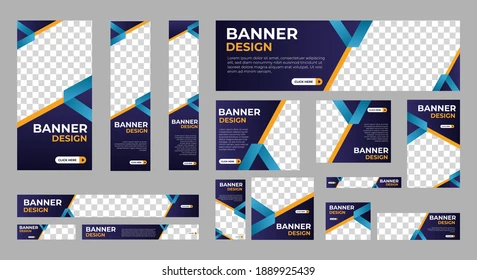When it comes to creating an effective email signature, there are a few guidelines that can help you find the best type of information for your unique situation.
Below, you’ll find a quick guide to creating a great email signature that will ensure your contacts remember you in a positive light!
Guide to Creating Email Signatures in Easy Step
Use your full name
The first step to create email signature is choosing a font, color, and size that work for your signature text.
When you’re ready to type in your name, make sure it’s readable! If you have a long last name, try shortening it (but don’t use initials). If you have a short first name or nickname, use that instead of your full name.
The aim here is consistency; if someone reads one email and then another sent by the same person days later, they should recognize the sender because their signatures look similar each time.
In addition, email signature generator is a great way to add your contact information without having to write it all out by hand. It’s more professional, and you can still include a phone number if you want.
Be sure to include your job title
Your job title is one of the most important pieces of information you can include in your email signature. It shows people that you are a professional and qualified, which can help them trust you more.
It also shows that you have leadership skills and are a team player, which helps others know they can count on you when they need help or advice.
Finally, your job title lets people know that if there is a problem to solve at work, they can come to you for guidance because it shows them that not only do you want to get things done but also that doing so makes sense for everyone involved.
It’s important to include a link to your LinkedIn profile too
It’s also important to include a link to your LinkedIn profile. This is because it helps people find you on the social network, which can lead them to learn more about you and connect with you directly. To add a link to your LinkedIn profile, go ahead and click the ‘Add Link’ button in the Signature Editor box.
Have a business website? Add it in…
If you have a business website, you should definitely add it to your signature. It’s a great way to increase visibility and drive traffic back to your site.
In fact, HubSpot found that including links was one of the top email marketing tactics for increasing conversions by about 12%.
So don’t forget to add your business website there!
Make sure you add your contact information too
- Include your email address.
- Include your phone number.
- Include your physical address.
- Include links to your social media profiles, website, and blog, if applicable.
- Add an image (optional). This can be a logo or an image that represents you and/or your business in some way. Make sure it’s something professional, clean, and pleasant so as not to distract from the message of the email signature itself!
We recommend using images that are related somehow but not too closely related (i.e., don’t use a picture of yourself if you don’t have one handy). If necessary, crop it so that only what is visible above doesn’t contain any text or graphics (you can always add text later once we’re done with designing this part).
However, email signature maker is a great way to make your email look more professional and clean.
Read also – https://www.odysseypedia.com/
Always include an email address
It’s important that you include your email address in your signature so that people can contact you. It should be one of the first things people see when they open an email from you, but it should also be easy to find later on if they need to refer back to it quickly.
Make sure your address is professional and valid: If someone is sending an email through work, they’re going to need their company’s email address as opposed to their personal one (unless they’re a freelancer). And make sure the domain name ends with something like “.com” or “.net,” rather than “.org” or some other non-traditional extension.
It will make it easier for people who don’t know much about internet security protocols—like grandparents—to recognize the address as legitimate.
After all, there are plenty of free email services out there where anyone could set up an account just by creating an account name and password; these websites aren’t semantically related at all! You want yours to look official so people know it’s safe before even clicking through.
And a phone number if you can
A phone number can also be a good idea to include in your professional email signature if you are an author or blogger.
And we are not talking about your work phone number (although, if you have one and want to share it with readers, go right ahead), but rather the one that is most commonly associated with your personal brand.
“For example, if my name was Captain Awesomepants, I might use captainawesomepants(@)gmail.com as my email signature address — it’s memorable and fun!”
However, there are some drawbacks to including a phone number in your email signature design:
- You run the risk of spammers calling you at all hours of day and night (or worse)
- Your contact information may not be available for public use if you work in an industry that requires privacy — such as law enforcement or government work
- Some people will only answer calls from numbers they know; thus they won’t answer calls from strange numbers unless they know who is on the other end by looking at their caller ID screen (and sometimes even then!)
Don’t forget your physical address
- Include your physical address, if you have one.
- Add your phone number, if you have one.
- And don’t forget to include your email address and social media links (or at least the ones for Facebook and Twitter).
- Be sure to include a link to your business website as well—especially if it’s new and hasn’t been included in any previous emails or marketing materials. This can be done by simply pasting an HTML code into the signature block of your email client’s settings window. If you’d like us to help with that, just let us know!
If possible, it’s best if you also include a link directly to your LinkedIn profile so people can get more information about who you are as well as what services or products you offer without having to leave their inboxes or search through multiple websites on Google Chrome:
Add some social media links too
- Add some social media links too.
- Include your social media handles, and make sure they are easily clickable. If you want to be extra thorough, add a link to your blog, website, newsletter, podcast, and YouTube channel as well. If you have an Instagram account that’s great for sharing pictures of what you’re up to, add it there!
But don’t go overboard with these!
Email signatures are a great way to include a personal touch to an email, but you want to avoid making them too long.
- Don’t use more than 2 colors in your signature
- Don’t include more than 2 images in your signature
- Don’t use more than 3 links in your signature
- Only have 1 logo or trademarked symbol (like the Apple logo) in your signature
Try adding an image to make your signature stand out even more!
If you want to stand out and make a lasting impression on your readers, you may want to add an image to your signature.
Images can be used for everything from logos and branding to personal photos or links.
To be sure that your signature looks professional and appealing, keep these things in mind:
- Make sure it’s a high-quality picture. A low-resolution photo will look pixelated when printed at full size in a document, so make sure the file is as clear as possible before sending it off for printing.
- Check the dimensions of your image before sending it off for printing. If the image has too many pixels (the more pixels there are per inch of space, the larger each pixel becomes), then it’ll appear blurry when printed out large on paper or screen—and nobody likes blurry signatures!
You can use graphics as well!
You can also integrate graphics into your signature. Here are some tips:
- Make sure it’s relevant to your business. If you sell handmade baby booties, don’t use a graphic of a toddler in full hockey gear.
- Make sure the graphic is high-quality enough that it won’t look bad when scaled down (which will happen if you choose to email with Gmail). If you’re not sure whether or not a photo or illustration will look good at smaller sizes, there are several sites where you can upload images and get an idea of how they’ll scale down before using them on your email signatures.
- Make sure the image isn’t too big for most people’s screens—the maximum dimensions should be less than 600px wide by 800px tall, but if possible try to keep it under 300px wide by 500px tall so that people on phones and tablets don’t have to scroll around too much just to read what’s below their contact info.
- If all else fails and your image is too big for mobile devices but still looks great on desktop computers and laptops/notebooks/etc., try resizing by hand so that only part of one side shows up instead of having both sides visible at once; this way no matter what device someone uses they’ll still be able to see all necessary information without having to go through extra steps or scroll across large portions at once just because their screen size isn’t large enough!
Emojis are also fair game – but keep it subtle!
Emojis are a great way to add a bit of personality to your signature. But don’t go overboard! If you use more than 3 emojis, it could come across as over the top.
Choose the ones that best represent you and stick with them – avoid using obscure or common emojis.
Remember, an email signature template is a quick, but powerful way to communicate how you want others to see you.
Keep it simple and clean, with a few strong messages that display your personality in the best light possible.
Don’t overdo the colors either – choose one or max two colors for your signature.
Don’t overdo the colors either – choose one or max two colors for your signature. Don’t use more than two colors as this will make it look too busy and complicated, which is not what you want. Similarly, don’t use bright or dark colors as they are distracting and can also be hard on people’s eyes.
In addition, avoid using different shades of similar hues like blue/turquoise or orange/red because this can make your signature appear scattered and unprofessional.



